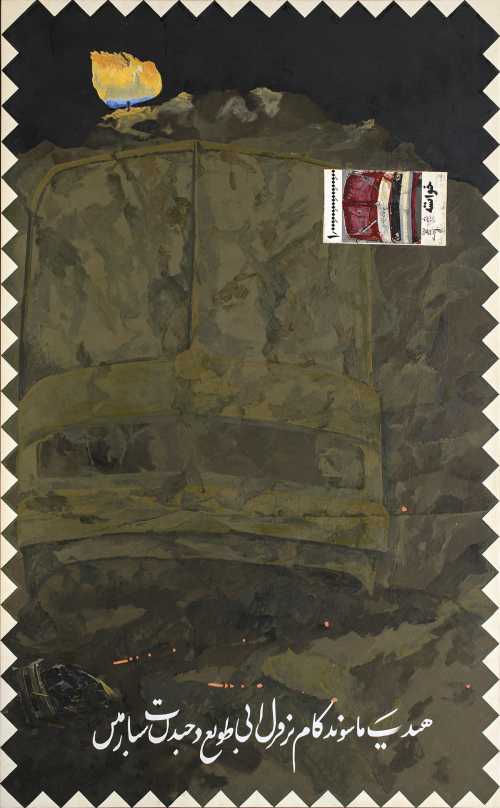About Bijan Akhgar
Bijan Akhgar, a contemporary painter, was born in Kermanshah. In 1993, he received his bachelor's degree in painting from the Tehran University of Art. He exhibited his paintings for the first time a year before graduation in his hometown, Kermanshah. he participated in the 4th Iranian Painting Biennale at the Tehran Museum of Contemporary Arts in 1993. In 1996, he participated in a group exhibition at Arian Gallery in Tehran. A year later, Laleh Gallery hosted his first solo exhibition in Tehran. Akhgar received his master's degree from the Tarbiat Modarres University of Tehran in 1996. In the following years, he presented his works in numerous individual and group shows and collaborated with galleries such as Etemad and Asssar.
Akhgar has always had a representational approach in his paintings, following a single path in terms of technique and using paint and brushstrokes. However, his works have changed regarding thematic aspects in different periods. He deals with landscape painting in the first period of his career in the 90s. Landscapes that take on an expressive mood with free brushstrokes. The artist is as loyal to the representation of nature as he is to the richness of his paintings. From the 2000s, the motifs of the road gradually appear in his works. Bus, terminal, road, and travel become the central theme of his works in this period, and the titles of the paintings are also in the same direction: "Oto Mehjabin," "Boro be Salamat," "Bar Cheshme Bad Lanat" and... are combinations coming from the current culture in these places. The abstract and spontaneous values of painting, such as the value of paint, texture, stroke, etc., gain more weight in the images of this period and occupy the dominant surface of his works; Elements such as bus and... occupy only a tiny part of the frames and create an excuse for maneuvering painting tools in the negative spaces of the painting. Since the 2010s, his compositions' forms and the logic of combining elements tend from objectivism to abstraction and take on a collage-like state. The use of elements such as writing, maps, aerial views, etc., together with each other, intensifies the fragmented character of his works and creates centrifugal paintings. In the next decade, this trait gradually fades, and the objective logic in his visual world becomes more robust. Mechanical parts of cars, buses, etc., are the main subject of the artist's works in this period.
The Most Expensive Artwork
At Auctions
First Attendance
1 July 2022
# Attendance
2
# Artworks
2
Average Realized Price
3,304 USD
Average Min Estimate
3,137 USD
Average Max Estimate
4,706 USD
Sell-through Rate
100%
Average Growth of Artwork Worth
-16%
Timeline
The 21st Tehran - Contemporary Iranian Art auction
11 October
Tehran- 16th- Iranian contemporary art auction
1 July
Tajrid-Abad exhibition
9 June
Shah-Abad exhibition
9 June
LOCALGRAPHY exhibition
4 October
Exhibition of Bijan Akhgar's paintings exhibition
24 August
In Circulation / Un Circulation III exhibition
6 June
In circulationun-circulation exhibition
25 May
